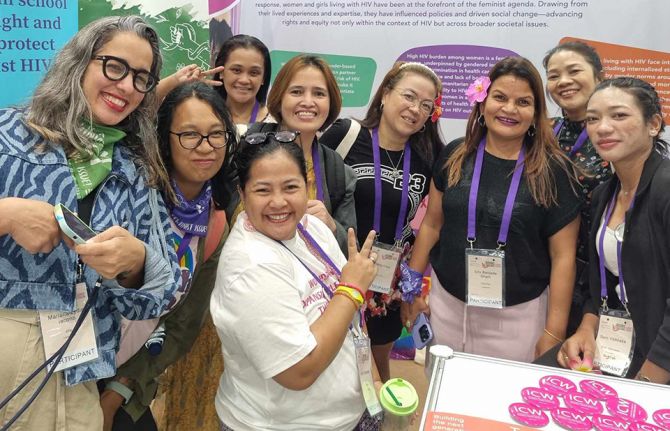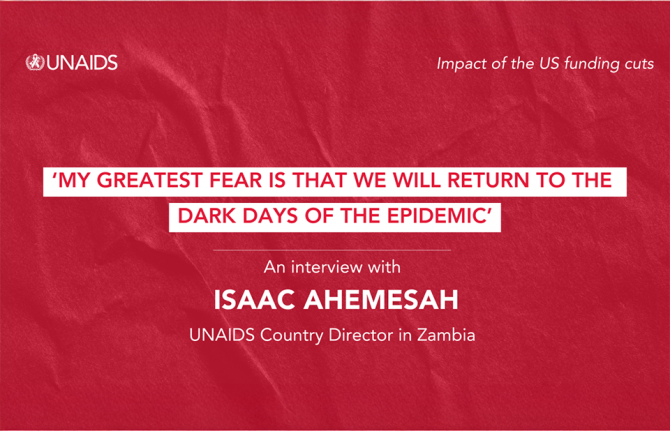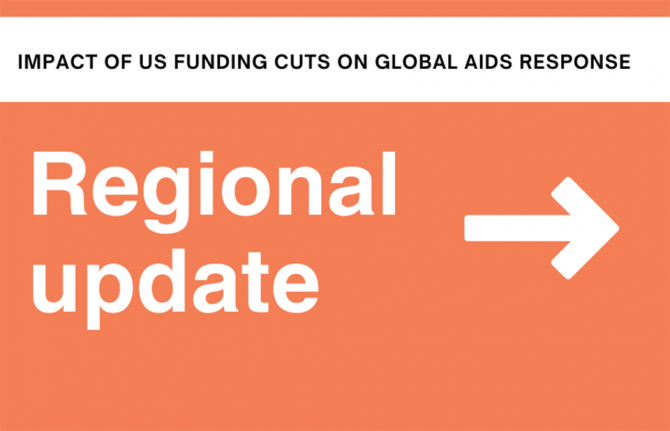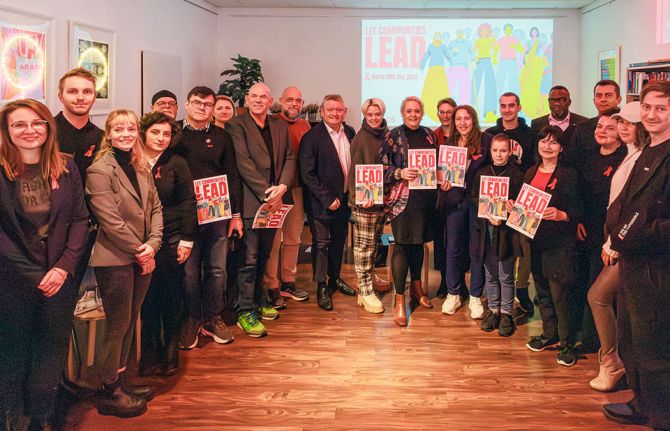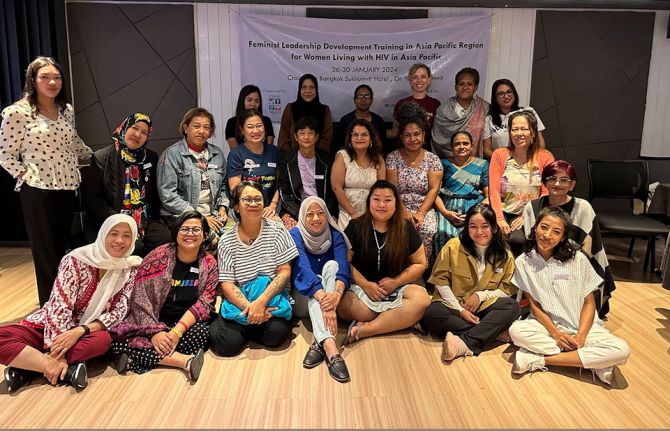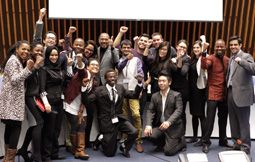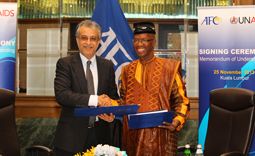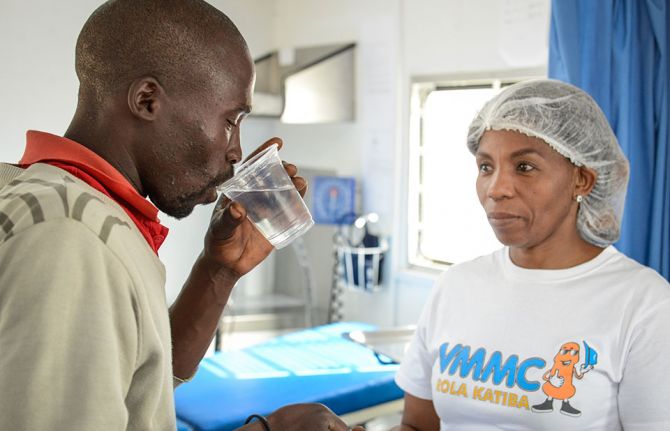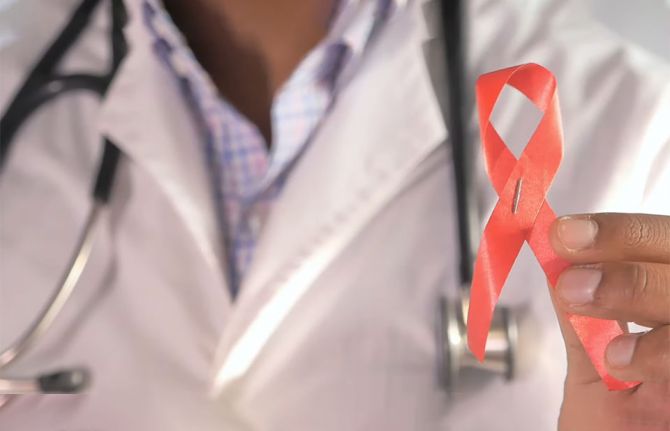
Feature Story
Gender equality key to development, says UNICEF report
11 December 2006
11 December 2006 11 December 2006
Photo credit : UNICEF/S.Noorani
The State of the World’s Children 2007 report published on 11 December by UNAIDS Cosponsor UNICEF underlines that empowering women is pivotal to the health and development of families, communities and nations.
The report emphasizes the fact that gender inequality and the low status of women in society are two of the principal drivers of HIV. Latest data show that women now make up 48% of all people living with HIV, and the proportion of women infected with HIV is increasing in Asia, Eastern Europe and Latin America. In sub-Saharan Africa, the region most affected by AIDS, 60% of all adults and three out of four young people living with the virus are female.
“When women are empowered to lead full and productive lives, children and families prosper,” said UNICEF Executive Director Ann M. Veneman.
Despite progress in women’s status in recent decades, the lives of millions of girls and women are overshadowed by discrimination, disempowerment and poverty. Girls and women are disproportionately affected by AIDS and women in most places earn less than men for equal work. Millions of women throughout the world are subject to physical and sexual violence, with little recourse to justice. As a result of discrimination, girls are less likely to attend school; nearly one out of every five girls who enroll in primary school in developing countries does not complete a primary education. Education levels among women, says the report, correlate with improved outcomes for child survival and development.
“If we care about the health and well-being of children today and into the future, we must work now to ensure that women and girls have equal opportunities to be educated, to participate in government, to achieve economic self-sufficiency and to be protected from violence and discrimination,” Veneman said.
The AIDS epidemic illustrates all too vividly how much needs to be done to overcome the social, cultural and economic factors that put women at risk of HIV and that unduly burden them with the epidemic’s consequences.
“Governments have made repeated commitments to improve the status of women and acknowledged the linkage with HIV,” said Sarah Russell of the UNAIDS-led Global Coalition on Women and AIDS. “In some areas, they have made progress. But by and large, efforts have been small-scale and haphazard. There is an urgent need for more systematic approaches.”
The State of the World’s Children shows how promoting gender equality and empowering women – Millennium Development Goal number 3 – will propel all of the other goals, from reducing poverty and hunger to saving children’s lives, improving maternal health, ensuring universal education, combating AIDS, malaria and other diseases, and ensuring environmental sustainability.
“UNICEF’s new report calls for seven key interventions to empower women,” noted Russell.
A roadmap to gender equality
- Education : Key actions include abolishing school fees and encouraging parents and communities to invest in girls’ education.
- Financing : Little recognition has been given to the resources needed to meet the goal of gender equality and women’s empowerment. Investment to eliminate gender discrimination must be integrated into government budgets and plans.
- Legislation : National legislation in property law and inheritance rights should ensure a level playing field for women, alongside measures to prevent and respond to domestic violence and gender-based violence in conflict.
- Legislative quotas : Quotas are a proven method of ensuring women’s participation in politics. Of the 20 countries with the most women in parliament, 17 use some form of quota system.
- Women empowering women : Grassroots women’s movements have been vocal champions for equality and empowerment and should be involved in the early stages of policy formation so that programmes are designed with the needs of women and children in mind.
- Engaging men and boys : Educating men and boys, as well as women and girls, on the benefits of gender equality and joint decision-making can help nurture more cooperative relationships.
- Improved research and data : Better data and analysis are critical, especially on maternal mortality, violence against women, education, employment, wages, unpaid work and time use, and participation in politics.
“Immediate and sustained action on all seven tracks will be critical if the world is to make meaningful progress towards universal access to HIV prevention, treatment, care and support,” she added.

Feature Story
19th Programme Coordinating Board meeting, Lusaka, Zambia, 6-8 December 2006
08 December 2006
08 December 2006 08 December 2006Some 260 participants gathered in Lusaka for the 19th Joint United Nations Programme on HIV/AIDS governing board meeting. The meeting brought together representatives from government, civil society, donors and the United Nations to push for greater UN action to strengthen country efforts against AIDS.
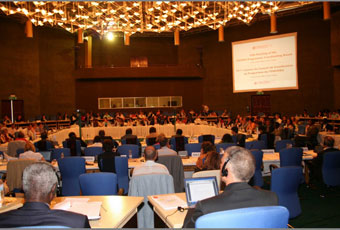 |
General view of the participants attending the 19th PCB meeting hold in Lusaka, Zambia, 6-8 December 2006 |
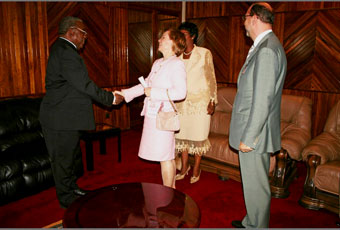 |
|
 |
One of the 19th PCB sessions was chaired by: (from left to right) Dr. Peter Piot, Executive Director, UNAIDS, Mrs. Gunilla Carlsson, Minister of International and Cooperative Development of Sweden, Mr. Ruphia Banda, Vice-President of Zambia, Mrs. Silvia T. Masebo, Acting Minister of Health, Zambia. |
 |
Namwene Phiri addressing the participants to the "Keep the Promise" session after receiving a prize for her contribution to the New York and Toronto banners. |
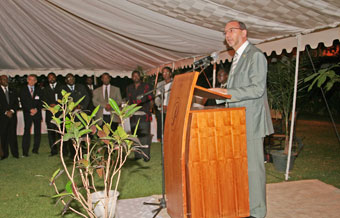 |
Dr. Peter Piot, Executive Director, UNAIDS addressing the participants to the reception hosted by the Minister of Health of Zambia and the Swedish Minister of the International and Cooperative Development at the 19th PCB meeting hold in Lusaka, Zambia, 6-8 December 2006 |
UNAIDS Executive Director Dr Peter Piot met with the Delegation from the Democratic Republic of the Congo during the PCB. The DRC has just completed its first democratic elections with the election of President Joseph Kabila. The DRC has been wracked by civil war for a number of years and the elections herald the start of a new era for the DRC. Dr Piot said in the opening plenary that the new era provides an opportunity to step up the pace of the AIDS response in the DRC.
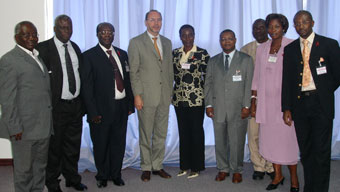 |
From left to right: Dr Engwanda, Head of NGO’s Forum for HIV/AIDS, DRC, |
All photo credit: S. Katilungu
Related

Feature Story
UNAIDS Special Representative HSH Princess Stephanie of Monaco leads creative AIDS fundraising activities
07 December 2006
07 December 2006 07 December 2006
Photo credit : Palace of Monaco
Bringing together musicians, artists and other famous faces, UNAIDS Special Representative HSH Princess Stephanie of Monaco continues her creative efforts to raise awareness and resources for the AIDS response.
The Princess is teaming up with the artists from the acclaimed musical Le Roi Soleil, as well as other famous international performers, to host two shows early next year at the Grimaldi Forum in Monaco.
Audiences attending the performances will be treated to an extraordinary “medley” show featuring selected songs from the musical accompanied by the Monaco Philharmonic Orchestra. In addition to raising funds, as with all her AIDS activities, Princess Stephanie also hopes the event will bring the issues of AIDS and stigma and discrimination to the forefront.
Proceeds from the event will go to the Fight AIDS Monaco organization and the building of a special house – the ‘Maison la Vie’ - in Provence, France which will be a centre for dialogue for people living with HIV and will offer care and support services. The house is planned for opening by 2008 and Princess Stephanie hopes people living with HIV will come and “recharge their batteries”,gain self-confidence and build skills to face the challenges posed by AIDS.
The planned musical event is one of a several activities organized by the Princess for the benefit of people living with HIV. On World AIDS Day she hosted a charity auction in Monaco and earlier this year Princess Stephanie again showed her creative fundraising skills by launching a charity pop single “L'Or De Nos Vies” (The Gold of Our Lives).
RHC
Links
Related

Feature Story
Calls for accountability and gender equality at World AIDS Day 2006 event in New York City
04 December 2006
04 December 2006 04 December 2006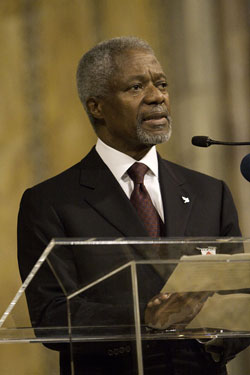
Photo credit : B. Hamilton
UN Secretary General Kofi Annan, UNAIDS Executive Director Peter Piot, AIDS activist Lynn Murchison and Hunger Project President Joan Holmes took part in an event in New York to commemorate World AIDS Day.
Speaking at the event, the UN Secretary-General highlighted the importance of accountability – the theme of this year’s Worlds AIDS Day – by saying, “ Accountability requires every President and Prime Minister, every parliamentarian and politician, to decide and declare that “AIDS stops with me”.
Dr Piot gave a brief overview of the epidemic saying that the latest global AIDS figures give reason for concern and for some hope. He also highlighted the need for more attention to be brought to women and girls.
Ms Holmes took the opportunity to endorse the recent recommendation of the Secretary General’s High-Level Panel on UN System-wide Coherence for the creation of a new, unified and ambitiously funded agency for gender equality and women’s empowerment.
The event was chaired by Rev. Kevin Bean and attended by approximately 400 people. It was organized by The Hunger Project, UNAIDS and St. Bartholomew’s Church and co-sponsored by African Regional Youth Initiative, EngenderHealth, The Interfaith Center of New York, Islamic Cultural Center of New York, MaAfrika Tikkun, Mosque of Islamic Brotherhood, Muslim Women’s Institute for Research and Development, Population Council, World Council of Churches and World Council of Conservative Synagogues. Entertainment was provided by PG and Love Choir and Salah.

Feature Story
World AIDS Day 2006 in New York
01 December 2006
01 December 2006 01 December 2006UN Secretary-General Kofi Annan was joined by UNAIDS Executive Director Dr Peter Piot and leaders of different faiths to commemorate World AIDS Day at St. Bartholomew’s Episcopal Church in New York. The gathering in New York was one of a host of events taking place around the world to mark World AIDS Day 2006.
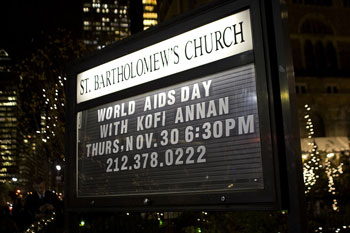
Sign outside New York's St. Bartholomew's church announcing the participation of Mr. Kofi Annan, United Nations Secretary-General, in the World AIDS Day 2006 event

Mr. Kofi Annan, United Nations Secretary-General delivering his World AIDS Day message at St. Bartholomew's church

Dr. Peter Piot, Executive Director, UNAIDS during his World AIDS Day speech

Ms. Lynn Murchinson, representing people living with HIV at the World AIDS Day 2006 ceremony.

Mrs. Joan Holmes, President, Hunger Project addressing the audience.

Members of the audience at St. Bartholomew's church during the 2006 World AIDS Day event.

A group of artists performing at the 2006 World AIDS Day celebration

From left to right: Ms. Lynn Murchison, Dr. Peter Piot, Mrs. Joan Holmes, Mrs. Annan and Mr. Kofi Annan
All photo credit : B. Hamilton

Feature Story
Wear your red ribbon this World AIDS Day
30 November 2006
30 November 2006 30 November 2006World AIDS Day 2019 theme — Communities make the difference

The red ribbon has become an internationally recognized symbol for AIDS awareness, worn by people throughout the year in support of people living with HIV and in remembrance of those who have died. On 1 December this year, people around the world will be pinning on their red ribbons as they commemorate World AIDS Day. But where did the ribbon come from?
In 1988, a group called Visual AIDS was founded by arts professionals as a response to the effects of AIDS on the arts community and as a way of organizing artists, arts institutions, and arts audiences towards direct action on AIDS.
Three years later, in 1991, some of the Visual AIDS artists came together to design a visual symbol to demonstrate compassion for people living with HIV and their care givers. Inspired by the yellow ribbons honoring American soldiers serving in the Gulf war, the artists chose to create a red ribbon to symbolize support and solidarity for people living with HIV and to remember those who have died from AIDS-related illnesses. The color red was chosen for its, "connection to blood and the idea of passion -- not only anger, but love, like a valentine," the Project founders say. The project was to become known as the Red Ribbon Project.
In a spontaneous campaign in 1991, Red Ribbon Project volunteers sent letters and red ribbons to all attendees at the Tony Awards in the United States where actor Jeremy Irons stepped out on national television with a red ribbon pinned prominently on his lapel.
The symbol came to Europe on a mass scale on Easter Monday in 1992, when more than 100,000 red ribbons were distributed during the Freddie Mercury AIDS Awareness Tribute Concert at Wembley stadium. More than one billion people in more than 70 countries worldwide watched the show on television. Throughout the nineties many celebrities wore red ribbons, encouraged by Princess Diana’s high profile support for AIDS.
“The fact that it was so widely imitated was amazing. We couldn't believe it,” said Allan Frame, one of the Visual AIDS artists involved in the creation of the red ribbon symbol.
Today the Red Ribbon has become an international symbol of solidarity and support for people living with HIV. Wearing a red ribbon is a simple and powerful way to challenge the stigma and prejudice surrounding AIDS .Wear yours with pride this World AIDS Day.
For more information on World AIDS Day activities around the world please visit the World AIDS Campaign website at: www.worldaidscampaign.info
Note: The red ribbon is a non copyrighted image that can be used freely around the world as an awareness-raising tool.

Feature Story
World AIDS day 2006
28 November 2006
28 November 2006 28 November 2006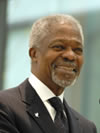 |
United Nations Secretary General message on World AIDS Day, 1 December 2006 In the 25 years since the first case was reported, AIDS has changed the world. It has killed 25 million people, and infected 40 million more. (...) For far too long, the world was in denial. But over the past 10 years, attitudes have changed. The world has started to take the fight against AIDS as seriously as it deserves. Read the UN Secretary General's message ( en | es | fr | ru | ar | ch ) |
 |
UNAIDS Executive Director, Dr. Peter Piot on World AIDS Day, 1 December 2006 (...) This is the 19th World AIDS Day, the 25th year since the first case of AIDS was identified and 10 years since UNAIDS was established. Read the UNAIDS Executive Director's message ( en | es | fr | ru ) |
| UNAIDS Cosponsors | UNAIDS Special representatives | UNAIDS Partners | |
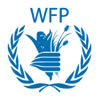 |
The World Food Program, on World AIDS Day, 1 December 2006 Political leaders are gradually becoming more aware of the need for food and nutritional support in the 'essential package of care' for people affected by HIV. Now it is time to put this into practice. We cannot allow hard-won efforts to provide life-saving treatment for people with HIV to be winnowed away by malnutrition. |
 |
Thoraya Ahmed Obaid, UN Under-Secretary-General, UNFPA Executive Director on World AIDS Day, 1 December 2006 "(...) If we are to stop AIDS and keep the promise, we must guarantee universal access to reproductive health as world leaders have agreed. (...)" |
 |
International Labour Organisation (ILO) on World AIDS Day, 1 December 2006 ILO staff made a human AIDS ribbon in their central hall, the Colonnades, in Geneva for World AIDS Day |
 |
Director-General of UNESCO, Mr Koïchiro Matsuura, on World AIDS Day, 1 December 2006 (...) I urge everyone to use the occasion of this year’s World AIDS Day to renew our collective commitment by holding ourselves accountable for the success of UNESCO’s response to HIV and AIDS. (...) |
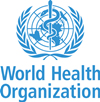 |
Dr Anders Nordström, Acting Director-General of the World Health Organization , on World AIDS Day, 1 December 2006 (...) We are now more than 25 years into this epidemic. People living with HIV and their communities urgently need to see tangible results. (...) |
 |
The World Bank, on World AIDS Day, 1 December 2006 (...) While HIV/AIDS is clearly a health problem, the world has come to realize it is also a development problem that threatens human welfare, socio-economic advances, productivity, social cohesion, and even national security. (...) |
 |
Salman Ahmad , UNAIDS Special Representative on World AIDS Day, 1 December 2006
(...) Everybody has a role to play and as an artist and UNAIDS Special Representative I promise that I will make sure that through my music and words I will try to shine a light on the heroic lives of People living with HIV. Music and video can help humanize the face of HIV, as I tried to do in Al-Vida, a music video which is about HIV & AIDS as much as it’s about women’s empowerment in South Asia (...) |
 |
Michael Ballack, UNAIDS Special Representative on World AIDS Day, 1 December 2006
Promises are important… on the football pitch and in life. |
 |
Serge Dumont, UNAIDS Special Representative on World AIDS Day, 1 December 2006 With close to 20 million deaths since the early days of the epidemic, 40 million people living with HIV, 4.3 million new infections and 2.9 million deaths caused by AIDS in 2006, the world is facing the most severe health crisis in history. While much progress has been achieved, so much more remains to do! |
 |
Mary Fisher, UNAIDS Special Representative on World AIDS Day, 1 December 2006 We have known this epidemic for 25 years. In the United States, it was 15 years of dying followed, for most of us, by 10 years of living. But when we look across the globe, it is still, today, mostly 25 years of dying. There is no question that we have the capacity to change that. What's being tested is our collective human will – and how that will is translated into policies, collaborations and cash. For World AIDS Day 2006, my message is an appeal: Let the communities of faith speak out with clear and moral voices, calling for an end to the suffering and death bred by this global pandemic." |
 |
HRH Mette-Marit of Norway, UNAIDS Special Representative on World AIDS Day, 1 December 2006 “(….)Those of you who are young today can actually stop the HIV/AIDS epidemic. Forty million people are infected with HIV/AIDS, which makes it the most serious health-related catastrophe of modern times. Of course, large sums of money and access to medicines are needed, and this is a responsibility for others. But you can do something just as important to make a difference: You can create more openness about HIV/AIDS. Shame and stigmatisation kill too – for instance when people are too afraid to find out whether they have the virus and then unknowingly infect others. (...) read the full statement |
 |
HSH Princess Stephanie of Monaco , UNAIDS Special Representative on World AIDS Day, 1 December 2006 Today on the 1st of December, many people remember that AIDS is still around. But AIDS needs to be remembered everyday and we must fight this pandemic, through prevention but above all support those who are already suffering. |
 |
Naomi Watts, UNAIDS Special Representative on World AIDS Day, 1 December 2006 Today, on World AIDS Day, the global community once again takes stock of the progress made and the considerable challenges ahead in the global fight against AIDS. As I have seen during my recent travels to Africa, many lifesaving efforts, undertaken by courageous champions, are serving increasing numbers of individuals and families in communities both large and small. But more, so much more, needs to be done. Let us pledge to make every day World AIDS Day and to join forces, to each do our part, to “keep the promise” to those all around the world who need our help. The hopes, aspirations and lives of millions people living with and affected by HIV worldwide demand nothing less. |
 |
Miriam Yeung, UNAIDS Special Representative on World AIDS Day, 1 December 2006 愛滋病是 每個人都要關心的事 。團結就是對抗愛滋病的力量,我盼望各人都 願意作出負責任的行為,保護自己和伴侶,免受 愛滋病病毒 的感染。我呼 籲 社會上各階層人士能多接納及關懷感染者及其家屬,讓他們不會感到被歧視和遺棄,使他們能過著正面而有意義的人生。 Everyone should care about AIDS. Unity is the strength in the fight against AIDS. I hope everybody can take responsibility to protect themselves and their partners from HIV infection. I also want to call upon members of the community to accept and show care for people living with HIV/AIDS and their families, so that they would not feel discriminated against and abandoned, thus encouraging them to live a meaningful and fruitful life. |
 |
Mukesh Kapila, Special Representative of the Secretary General for HIV/AIDS, International Federation of Red Cross and Red Crescent Societies, on World AIDS Day, 1 December 2006 After twenty years’ experience and hundreds of conferences and seminars, it is time to move beyond the endlessly repeated statistics, and to face the AIDS challenge head-on with effective specific solutions. We know what must be done to prevent further infection, expand care, treatment, and support, and reduce stigma and discrimination. |
 |
Bhatupe Mhango, UN+ Coordinator on World AIDS Day, 1 December 2006 I would like to reiterate a common place saying in the HIV and AIDS response: `It is not about how you contracted the virus…it is about how we will all respond to the HIV infection.` So there is no room for moralizing the epidemic or placing judgment. I will not keep you guessing- yes, I am HIV positive; I am a woman, and I am from Africa. And I am here to remind each and every one of us of the importance of keeping our promise. |
 |
Lillian Mworeko, International Community of Women living with HIV/AIDS on World AIDS Day, 1 December 2006 On this day, the International Community of Women living with HIV/AIDS in East Africa raise and add our voice to the many; to our fellow fighters, advocates and activists, political leaders and all players to be accountable and keep to our promise. THE WAR must be won and this calls for concerted efforts. |
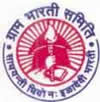 |
GRAM BHARATI SAMITI (GBS) on World AIDS Day, 1 December 2006 Gram Bharati Samiti, the first NGO initiating work on HIV/AIDS in Rajasthan in the year 1991, has been involved in many activities i.e. awareness, education and counseling, treating STIs/RTIs, peer education, condom promotion etc. during past 15 years. |
 |
United Nations High Commissioner for Human Rights on World AIDS Day 2006, 1 December 2006 (...) The Universal Declaration of Human Rights calls upon "every organ of society" to promote and secure the recognition and observance of human rights. The HIV epidemic underscores the urgency of heeding this call - as governments, civil society, private sector, UN system, and individuals - acting as a diverse but unified force, and ensuring our accountability for processes and results. (...) |
 |
His Holiness Benedict XVI, Pope on World AIDS Day, 1 December 2006 I hope that World AIDS Day will serve to foster greater responsibility in curing the disease, as well as in the commitment to avoid all discrimination of those who have been affected. |
 |
The Archbishop of Canterbury on World AIDS Day, 1 December 2006 "(...) I stand with all the archbishops of our Communion in offering what we can to create a generation free from HIV and AIDS..(...)” |
 |
Caritas Internationalis on World AIDS Day, 1 December 2006 "(...) to make a significant contribution to the struggle against the spread of HIV and to assist Caritas member organisations in mobilising an effective response to the needs posed by the HIV epidemic.(...)” |
 |
Reverend David Coffey, President of the Baptist World Alliance on World AIDS Day, 1 December 2006 "(...) Let’s make a fresh commitment to the new commandment of Jesus and end ignorance, stigma and isolation (..) " |
 |
Rabbi Steve Gutow, executive director of the Jewish Council for Public Affairs on World AIDS Day, 1 December 2006 (...) Universal treatment by 2010 is the promise. It must be kept. (...) |
 |
Presiding Bishop Mark Hanson, Evangelical Lutheran Church in America on World AIDS Day, 1 December 2006 "(...) We are called as Jesus' disciples to follow Jesus, to stand in solidarity with those whom society deems to be marginalized, to offer healing to those who are vulnerable, and to lay down our lives in love for the neighbor. (...)" |
 |
Ruth Messinger, President of the American Jewish World Service on World AIDS Day, 1 December 2006 "(...) It is not your responsibility to finish the work of repairing the world, but neither are you free to desist from it. (...)" |
 |
NIGERIAN SUPREME COUNCIL FOR ISLAMIC AFFAIRS (NSCIA) AIDS PROGRAMME FOR MUSLIM UMMAH (APMU) on World AIDS Day, 1 December 2006 "(...) Brothers and Sisters in Islam, today marks another milestone in the fight against the dreaded disease, HIV/AIDS, which has either infected or affected all of us irrespective of tribe, race or religion (...)" |
 |
Eustathius Matta Roham, Archbishop of Jazirah and Euphrates, Syrian Orthodox Church of Antioch on World AIDS Day, 1 December 2006 "(...)Jesus, however, never ignored lepers or other marginalized people. We owe it ourselves to follow Christ’s example by standing humanely with HIV-positive people and other marginalized groups in our society. (...) " |
 |
Sangharaj & The Supreme Patriarch Of Bangladesh on World AIDS Day, 1 December 2006 "(...) Given that, Buddhism is a practical spiritual way, essentially concerned about the fate of the human being. More than the pathology itself, it is the people, those who carry the virus and those who are ill, whom the Buddhist will focus his attention upon. (...)" |
 |
The Most Rev. Katharine Jefferts Schori, Presiding Bishop and Primate, The Episcopal Church on World AIDS Day, 1 December 2006 "(...) Words, words, words won't help us in our fight against the pandemic. Now is the time for action. (...)" |
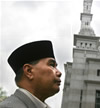 |
KH.DR. Tarmizi Tahir,Rector, Azzahra University Chairman, Board of Directors, Center for Moderate Muslims (CCM) on World AIDS Day, 1 December 2006 "(...) UNAIDS has seen the potential of religion to fight HIV and AIDS and the role of social and cultural leaders. We have been dealing with drug abuse, HIV and AIDS for two decadesbut we have not yet been achieved success. (...)" |
Related

Feature Story
AIDS and Human Rights activist awarded
28 November 2006
28 November 2006 28 November 2006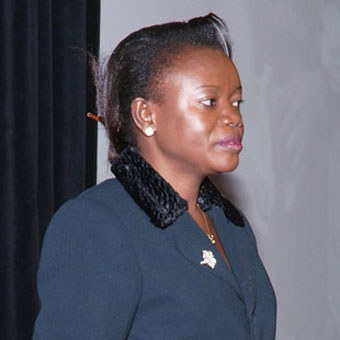
Photo courtesy of "In these times" Magazine
AIDS and human rights are inextricably linked as demonstrated by Beatrice Were, a leading advocate for the rights of people living with HIV in Uganda who recently received the Human Rights Watch Defender Award in recognition of her work.
Mrs. Were is the co-founder of the National Community of Women Living with AIDS (NACWOLA), a grassroots organization that provides services to more than 40,000 women in 20 districts of Uganda. She has served as Executive Coordinator of the International Community of Women Living with HIV/AIDS, Uganda, has worked with UNAIDS over the years and was formerly a member of the UNAIDS Reference Group on HIV and Human Rights. Beatrice Were is currently working as the National HIV/AIDS coordinator for ActionAID International and has collaborated with different organizations to re-address the HIV prevention policies towards a more evidence and rights based response to AIDS in Uganda.
Beatrice Were talks to UNAIDS about the implications of the award on her work and on the rights of people living with HIV.
What does this award mean to you?
Basically this award means that my work is being recognised but also, in a much broader sense, it means that there is recognition of HIV as a Human Rights issue and more specifically there is recognition of the rights of women living with HIV. This award has also challenged me to do more to sustain the visibility of the rights of the people living with HIV as part of the Human Rights.
Is this award going to have any repercussions on your work?
As an HIV positive activist, my work towards the promotion of Human Rights and specially those of women living with HIV has been regarded by governments or scientists as emotional or unscientific. The award gives me the opportunity to show that contributions from activists like me and contributions from women living with HIV are essential to an effective response to AIDS and specifically in protecting the rights of people living with HIV.
Please, tell us about your professional trajectory.
I started from the grassroots level by working with home-based-care programmes for people living with HIV. Soon after, I decided to start an organization to support women living with HIV, addressing issues of property rights, doing advocacy, awareness raising and fighting stigma and discrimination. Today I focus my work on policy issues, accountability and critical engagement with government, donors and stakeholders to ensure that HIV is treated as a Human Rights issue. I’m also working to address gender inequality and access to treatment and prevention as well as dealing with issues of government corruption on abuse of funds committed to AIDS programmes.
What inspires your work?
After my husband’s death, I also tested HIV positive. My in-laws wanted to grab my property, take my children and marry me to my brother in law. Although I was still a young woman then I struggled, I fought back for my rights and I started speaking out. My inspiration today comes from the fact that what I started as a personal struggle when my own rights were abused has helped and improved the live of thousands of women. I am encouraged because I have seen that the power that lies within me has changed things and I believe that any woman once they are informed and supported can also make that change happen.
What do you think the role of the community is in promoting human rights in relation to HIV?
First of all communities need to be conscious that human rights are not a favour from government, that they own those rights and that they have the power to demand governments, NGOs and civil society to respect and fulfil those rights. Communities can do a lot by mobilising themselves and use the power of numbers to speak loud to address human rights and HIV, issues of property rights of women, gender violence or marital rape. The other thing that communities can do is protect the rights of people affected by HIV by respecting them and reducing stigma. The engagement of community leaders is particularly important to lead this process.
What has changed in the last ten years in Uganda?
On the positive side, what has changed is the recognition, even up to the UN level, that people living with HIV are critical partners in the response to the epidemic. There is also consciousness and high level of awareness of women’s rights and to some extent acknowledgement of those rights has been important. However, on the negative side, what is changing in Uganda is that we are seeing a new wave of stigma through a moralisation of the disease by new and radical evangelical groups. The influence of US policy on Uganda’s prevention strategy is undermining the efforts that Uganda has made in the last 25 years. There is also corruption in Uganda, embezzlement of the Global Fund money, reduced political will by government over HIV prevention and care programmes, and when a lot of money is coming into the country to strengthen the health system, we are seeing ARVs expiring and an incompetent health system unable to deliver antiretroviral therapy to the 130.000 Ugandans who need it consistently. So it is quite disappointing that Uganda which has been a success story in its response to AIDS is now undermining human rights not respecting the right to health or the right to information by only promoting abstinence-until-marriage prevention programmes.
How do you see the future in terms of Human Rights and HIV?
Personally I see a lot of opportunities in the near future because now there is recognition by international human rights groups like Human Rights Watch or UNAIDS through its Gender and Human Rights department. I see the opportunity of using these spaces to really amplify the issues of HIV and human rights. I also see opportunities for the activism of people living with HIV (PLHIV) and the networks of PLHIV who are at grassroots level. However, it is critical for those networks to be supported so they can grow strong. I also see opportunities in the other human rights groups who are now beginning to work closely with AIDS activists. Finally, there are many treaties on HIV and Human Rights that we need now to start using as guidelines more than ever instead of having those documents lie on the shelves.
Related Links:
Related
 “Who will protect our young people?”
“Who will protect our young people?”

02 June 2025
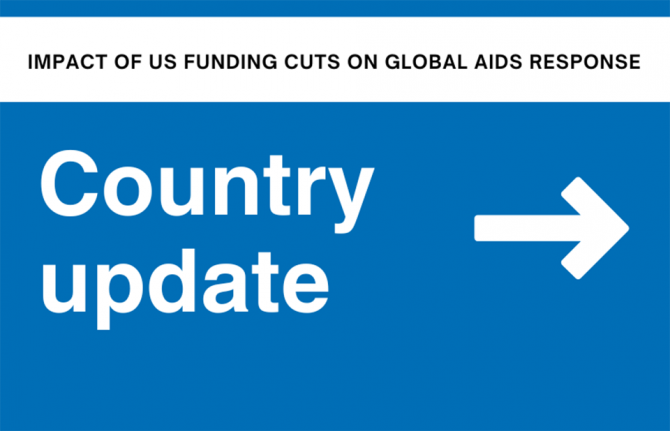 Impact of US funding cuts on HIV programmes in Uganda
Impact of US funding cuts on HIV programmes in Uganda

19 March 2025

Feature Story
Stop violence against women; stop HIV
27 November 2006
27 November 2006 27 November 2006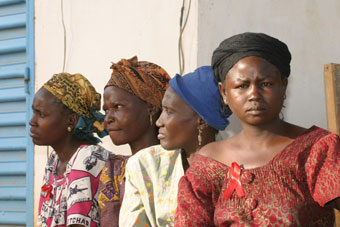
Photo credit : UNAIDS\H. Vincent\Avecc
For Ugandan mother Margaret Namusisi, violence and HIV infection are constant threats. “There are times when I tell [my husband] to use a condom but he refuses. That causes disputes. So I have sex with him so that he will provide for the children and won’t fight,” she said1. “The co-wives are dying one by one. He’s still having sex with me without a condom. If I tell him to use a condom there is such a big fight.”
Margaret’s experiences are far from unusual. For millions of women across the world, violence or the threat of violence is an every day reality. Recent research by the World Health Organization reveals that in some countries more than half of all women experience sexual violence by an intimate partner.
And for many of women, violence dramatically increases their vulnerability to HIV infection. Studies from Rwanda, South Africa and Tanzania show up to three-fold increases in risk of HIV among women who have experienced violence compared to those who have not. Violence or fear of violent reaction makes it difficult or impossible for many women to abstain from sex, to get their partners to be faithful, or to use a condom. For the same reason, women are often deterred from accessing HIV prevention, testing, treatment and care services
In South Africa, national youth surveys show that 33% of young women report they are afraid of saying no to sex and 55% have sex when they do not want to because their partner insists. More alarming still, between 20%-48% of adolescent girls aged 10-25 report their first sexual encounter was forced.
“Wherever you find violence —whether it's physical, psychological, or sexual —there will be AIDS. HIV entered my life through violence, as it has for so many, and we must actively commit to bring this to an end," said Violeta Ross Quiroga, National Chair of the Bolivian Network of People Living with HIV/AIDS (REDBOL)
In an effort to stem violence against women the Center for Women’s Global Leadership launched the ‘ 16 Days of Activism Against Gender Violence’ in 1991. Running every year from 25 November – 10 December, this international campaign highlights the fact that millions of women in every society around the world face violence every day, most often at the hands of husbands and partners, and within the so-called safety of their homes and families.
“The 16 Days Campaign brings together an incredible range of individuals and organizations to call for one thing: the elimination of violence against women,” said Sarah Russell of the UNAIDS-led Global Coalition on Women and AIDS. “The campaign is getting bigger by the year, and its message starker.”
In the past two years, the campaign has underscored the intersections between domestic violence and HIV.
“Not only does forced sex make women more liable to infection, but the fear of violent male reactions – physical and psychological - prevents many women from going to find out more about HIV,” said Russell “It discourages them from getting tested and stops them seeking treatment.”
That’s why the Global Coalition on Women and AIDS has made eliminating violence against women a priority, calling on governments the world over to enact and enforce laws that prevent violence against women, and develop strategies so that those who uphold the law know how to apply it and support survivors of violence. The Coalition also recommends that national AIDS plans integrate strategies to reduce violence against women, and link violence prevention efforts with mainstream HIV prevention and treatment services.
1 Interview with Human Rights Watch, 2003
Links:
16 Days of Activism web site
Global Coalition on Women and AIDS, section on violence
Related

Feature Story
Joining forces to tackle TB and HIV
24 November 2006
24 November 2006 24 November 2006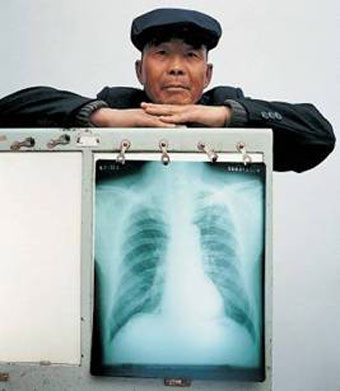 Photo credit : WHO
Photo credit : WHOTuberculosis (TB) is one of the biggest killers of people living with HIV and at least one third of the 39.5 million people estimated to be living with HIV around the world are likely to be infected with the TB bacteria. As a result of chronically poor investment in global TB control a new strain of TB is emerging that has become resistant to most of the available anti-tuberculosis drugs. Known as extensively drug resistant TB (XDR TB) this strain has serious implications for people living with HIV as it is almost untreatable in many of the countries where it is occurring leading to very high death rates. WHO and UNAIDS, together with other actors working on TB and HIV issues are stepping up action to stop the spread of TB and this deadly new strain.
TB is an infection which usually affects the lungs and is spread, like the common cold, through the air from an infectious person coughing, sneezing or even speaking. One third of the world’s population is infected with TB but only 5-10% of people who are infected with TB actually develop TB disease during their lifetimes. However, co-infection with HIV makes TB disease much more likely and one in ten people infected with TB who also have HIV will develop TB disease each year.
TB is treatable and can usually be cured in people living with HIV, however some strains of TB bacteria have now acquired resistance to one or more of the antibiotics commonly used to treat them; these are known as drug-resistant strains. Treatment for these infections is much longer and much more expensive. The recent outbreaks of tuberculosis that is resistant to almost all of the available TB drugs are giving serious cause for concern as this extensively drug resistant strain (XDR TB) is virtually untreatable when it occurs in people living with HIV and has a very high death rate.
UNAIDS has been following the developments closely. “We need to rapidly ensure prompt diagnosis and effective treatment of TB for people living with HIV in order to prevent drug resistance from developing and spreading,” said UNAIDS’ HIV/TB advisor, Alasdair Reid.
TB drug resistance arises mainly because of inadequate TB control, poor patient or clinician adherence to standard TB treatment regimens, poor quality drugs or inadequate drug supplies. People living with HIV are particularly vulnerable to developing drug-resistant TB because of their increased susceptibility to infection and progression to active TB.
At the 37th Union World Conference on Lung Health held in Paris in November 2006, the interaction between TB and HIV and the threat of extensively drug resistant TB featured prominently in the agenda. The serious implications of the new strain of XDR TB for people living with HIV were highlighted at a special plenary session held during the conference. Dr Kevin De Cock, Director of WHO HIV/AIDS Department said, “The recent emergence of a cluster of cases in South Africa has demonstrated the high mortality that XDR TB can have when associated with HIV infection. Countries with a high prevalence of HIV have been responding quickly to draw up plans for managing and preventing drug-resistant TB and this is welcomed.”
Because of the serious threat that TB and especially XDR TB poses for people living with HIV, UNAIDS and the WHO HIV and TB departments are joining forces to encourage a coordinated and concerted global effort to control TB in people living with HIV.
WHO’s Global Task Force on XDR TB have recently published a report outlining measures needed to urgently combat extensively drug-resistant XDR TB. It follows the announcement by WHO and its partners that US$ 95 million will be required to implement the recommendations in the report, to address the threat of XDR-TB in 2007 in southern Africa. WHO have also released new guidelines on how to improve the diagnosis of TB in people living with HIV.
Links:
Access WHO new guidelines.
Frequently asked questions about Tuberculosis and HIV.
WHO TB
Stop TB partnership
Presentations from the Union meeting on XDR TB can be viewed through the Kaisernetworks link on the Union website.
International Union Against Tuberculosis and Lung Disease


